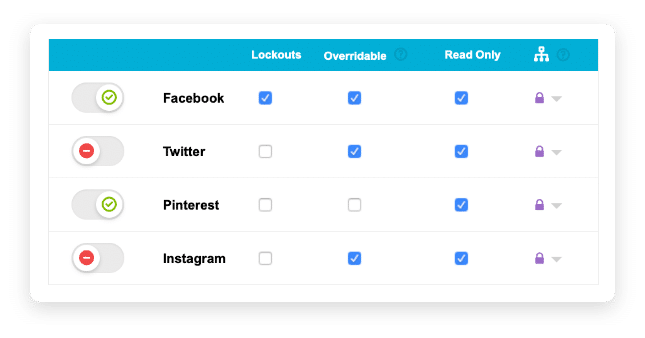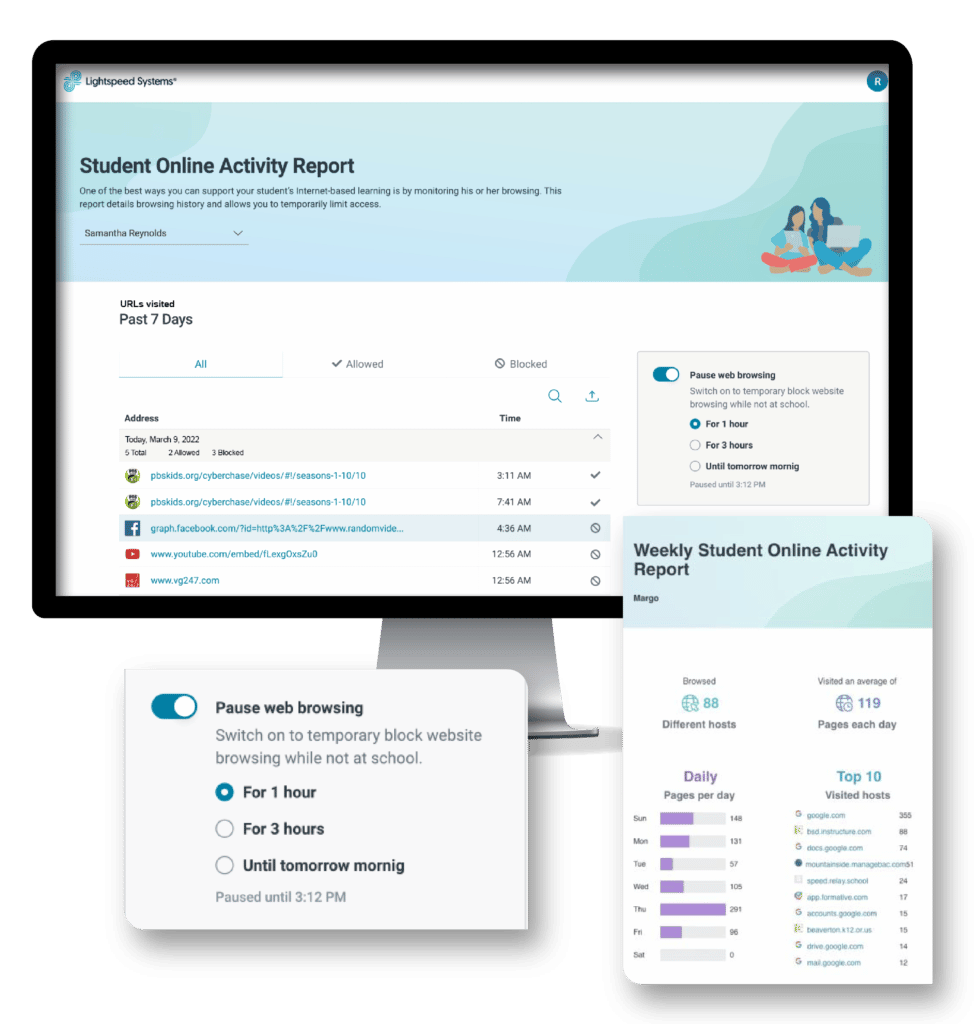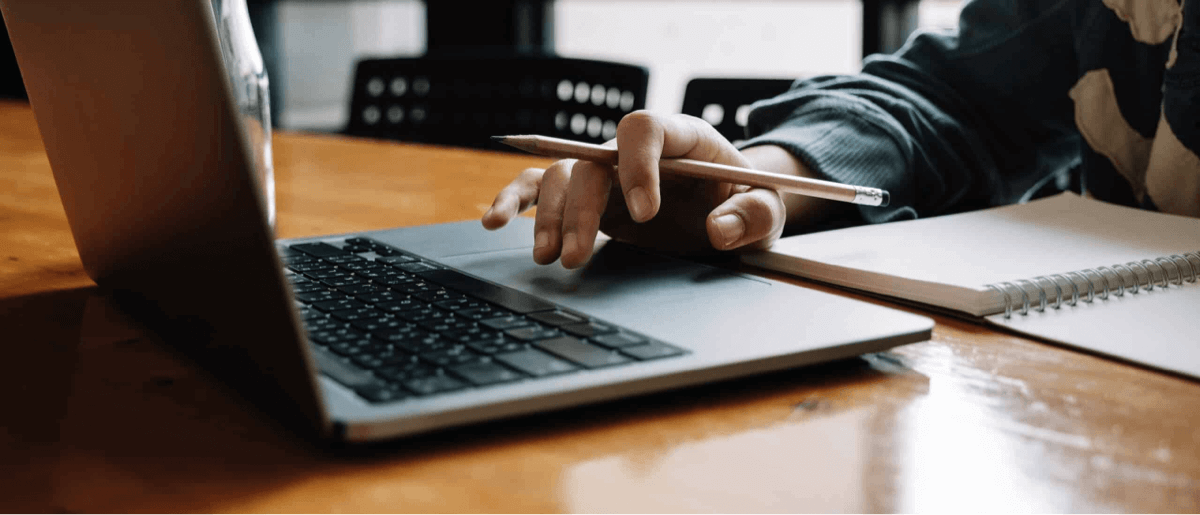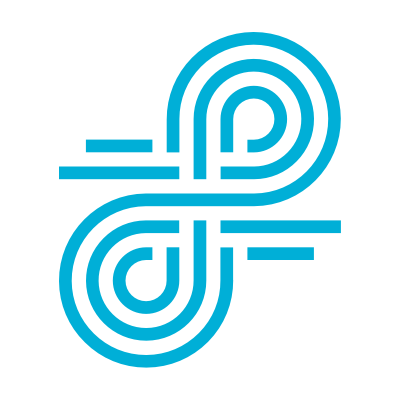The importance of student digital citizenship
Even people who work with students probably don’t realize just how much time kids spend online. The average American tween spends 4 hours and 44 minutes on their screens each day—and that is in addition to the time they spend on their devices doing schoolwork. For teenagers, that number goes up to 7 hours and 22 minutes. Students from lower socioeconomic backgrounds tend to spend still more time online than more privileged students do.
But just because tweens and teens spend seemingly endless hours online and have grown up with the internet, doesn’t mean they know how to use it responsibly.
While online, many students treat each other poorly. More than a third of students between the ages of 12 and 17 have been bullied online. Nearly a quarter of students admit to saying or doing something cruel online. In addition to hurting each other directly, students often engage in digital self-harm or expose themselves to the mistreatment of strangers: 15% of teens have shared explicit pictures of themselves to people they’ve never met. More than three-fifths of teens who have sent nude pictures report feeling pressured to do so. All these behaviors can have lasting ill effects on a student’s mental health and increase the risk of suicidal thoughts or actions.
With students confronting so many hazards while on their devices, districts looking to create a safe and respectful community for all students must focus their efforts on encouraging—and enforcing—good behavior online. That is, they need to teach students to see the importance of good student digital citizenship.
How districts can help turn students into digital citizens
Student digital citizenship defines each person’s rights and responsibilities in the collective effort to create a safe, healthy online community for everyone. Because many students tend to see themselves as individual users of the internet whose actions don’t directly affect their peers, districts should work to teach students to follow the tenets of good digital citizenship. Doing so will help schools achieve better learning outcomes, keep students safe, and promote equity among vulnerable groups. While there are no hard and fast rules about how to promote digital citizenship, distributing this free guide to parents and starting with these three tactics for solving pervasive problems can help.

Problem 1: Online communication facilitates cruelty
Because so much of the internet is based on written communication, students are deprived of many of the cues that ordinarily inspire empathy: facial expressions, tone, body language. As a result, people often speak or act on the internet in ways they would never dare to do if the other person were physically present. Nowhere are these problems more pronounced than on social media platforms.
The Solution: Customizable social media controls
Because social media platforms are one of the main places online where students interact, it’s important to impose guardrails on the ways students use them. Schools need granular controls in order to promote responsible usage among students of different agents, so districts need Lightspeed Filter™, an award-winning filtering solution designed exclusively for K-12 and powered by always-improving AI technology. With our solution, administrators can block certain social media platforms altogether, or limit their use to certain times of day or to certain age groups. Administrators may also choose to allow these sites in read-only mode, which can help mitigate the sites’ effects on student mental health.

Problem 2: Many filters don’t adequately protect students
Districts know they need a filter, but not all filtering solutions are created equal. In a recent test, many leading filters let through the majority of pornographic content, while only Lightspeed Filter blocked it all. Further, many filters don’t work on all operating systems, while others fail to block the thumbnails of inappropriate YouTube videos. To keep students safe—and to help promote digital citizenship—districts need a dynamic, customizable filter that gives districts more control over the content students engage online.
The Solution: Lightspeed Filter’s unrivaled features
SmartPlay™ turns YouTube into a safe instructional tool thanks to our patented agents that block inappropriate videos, thumbnails, and recommended content. Customizable policy controls enable administrators to selectively allow and permit content by grade level, group, class, and type of site, which means districts can ensure students are only engaging with YouTube content that is appropriate for them. Administrators may also choose to block the comments section for comprehensive protection.
But of course, students will still sometimes try to engage with inappropriate material. That’s why Lightspeed Filter empowers districts to temporarily lock students out from the internet. Schools can determine what types of sites trigger a lockout and can implement customized conditions for when a lockout will occur (e.g., a student attempts to access blocked websites more than three times in one minute) and for how long the lockout lasts. Lightspeed Filter will display to the student a customizable message that explains why they no longer have internet access, which provides an opportunity to remind students of the duties involved in good digital citizenship.

Problem 3: Parents don’t know how to help promote digital citizenship
If responsible internet usage is challenging for people who grew up online, it is still more difficult for parents who are always forced into playing catch-up with their children’s digital lives. Because parents so often do not know what kids are doing on their devices—or what healthy online behavior would look like—they can struggle to effectively support schools in their efforts to promote digital citizenship.
The Solution: Give parents a window into their kids’ online lives
One of the best ways to promote digital citizenship is to engage parents and give them the information they need to have constructive conversations with their children. That’s why our filter includes the Lightspeed Parent Portal™, which keeps parents informed about students’ online activity through weekly emails. The tool also allows parents to see what their children are doing online at any time and to impose temporary restrictions on internet access in order to impose healthy limits on screen time.
Learn more about how Lightspeed Filter promotes digital citizenship and can help keep your students safe online while filtering out dangerous content. Schedule a demo today!

